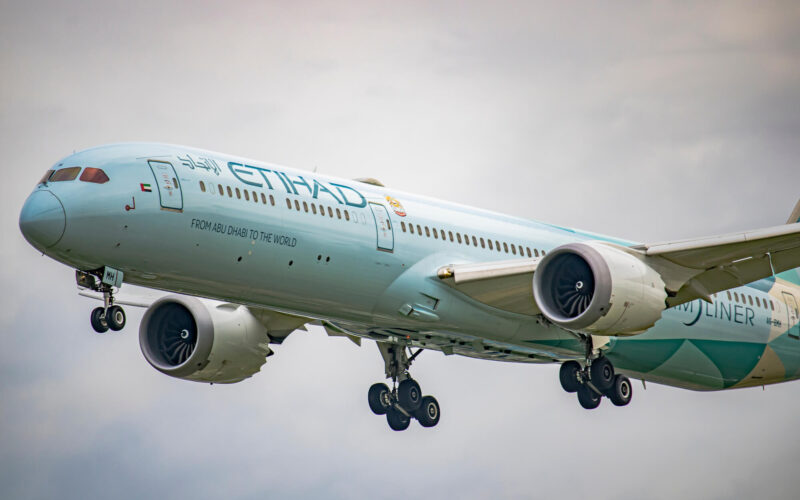Investigators have explained how an incorrect altimeter setting caused an Etihad cargo flight to become too low on approach at Abu Dhabi airport (AUH).
The serious incident, involving a Boeing 787-10 Dreamliner with registration A6-BMD, took place on June 6, 2020, at 1001 UTC.
When descending from Flight Level 160 to an altitude of 7000 feet on the flight from Beijing Capital International Airport (PEK), the crew selected 1009 as the pressure setting, instead of the correct QNH of 999. The QNH for PEK was 1009 when the plane departed China. This discrepancy meant the aircraft was actually flying 300 feet below what was indicated on the instruments throughout the descent and approach to AUH.
Flight Levels are flown using the standard pressure setting of 1013, and the altimeter setting must be changed to the local QNH when changing to an altitude.
When coming in to land on runway 31L, the crew noticed that the PAPI lights next to the runway, which help pilots to determine whether they are high or low on approach, were showing four red, meaning the plane was too low. This was noticed when the plane was approximately 210 feet above the ground, but still 1.3 nautical miles from the runway. They carried out a go-around and were instructed to climb to 4,000 feet.
The crew levelled off at what they thought was 4,000 feet. However, the air traffic controller’s screen showed the aircraft was at 3,700 feet and asked the crew to confirm the QNH setting. It was at this point that the crew changed the QNH setting to the correct value.
“The approach below the profile in the first landing attempt, and level-off at 300 feet below the standard missed approach altitude after the go-around, indicate that the flight crew were unaware of the correct vertical profile during the approach and go-around,” The Air Accident Investigation Sector of the United Arab Emirates (AAIS) states in its report.
“The Investigation believes that the flight crew only became aware of the root cause of the vertical profile discrepancy after being directed by ATC to change to the correct QNH after the completion of the go-around.”
Among contributory factors to the incident, the investigators cited the crew’s fixation on managing the high-energy descent from FL160, and the failure of controllers to provide the QNH when clearing the crew to an altitude of 7,000 feet from FL160. In addition, a warning that appeared on the controllers screen to alert that the plane was below the minimum safe altitude was not acted on.
Etihad has since changed its procedures to require crew to confirm the QNH before the initial approach fix, as well as provided additional training.
Investigators also said the crew and airline failed to report the incident in a timely manner, meaning the cockpit voice recording of the incident flight was recorded over by subsequent flights. The AAIS recommends that the aviation authority introduce a requirement for 25 hours CVR recording capability for new aircraft with maximum certificated take-off mass of more than 27,000 kg as well as requiring retro-fitting of older aircraft.

